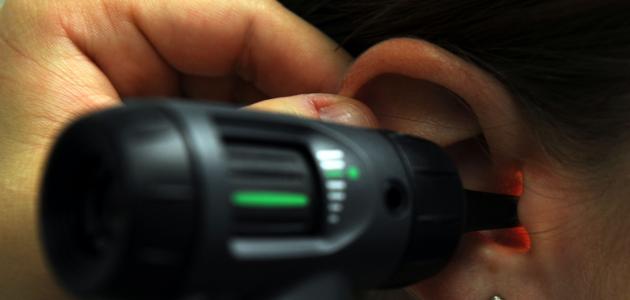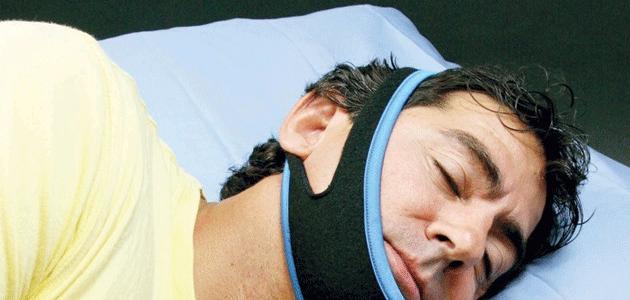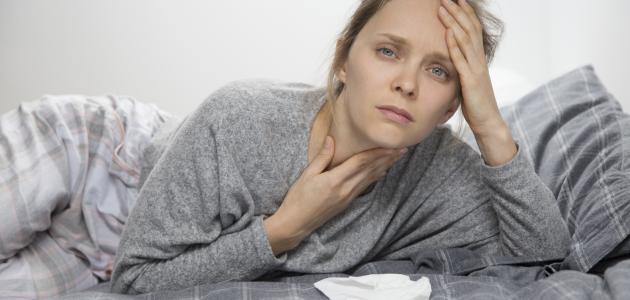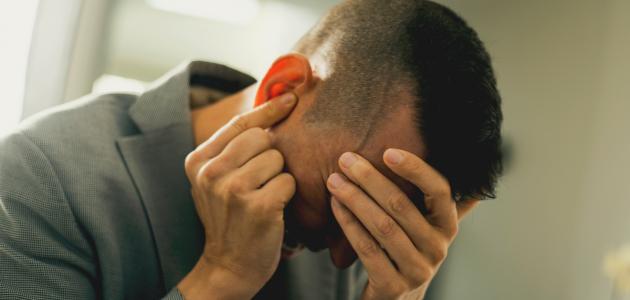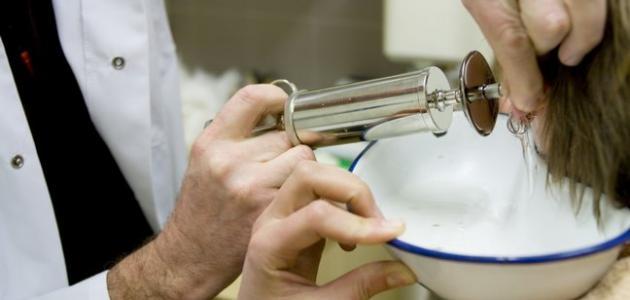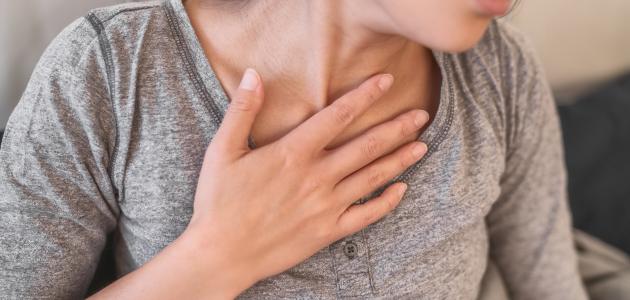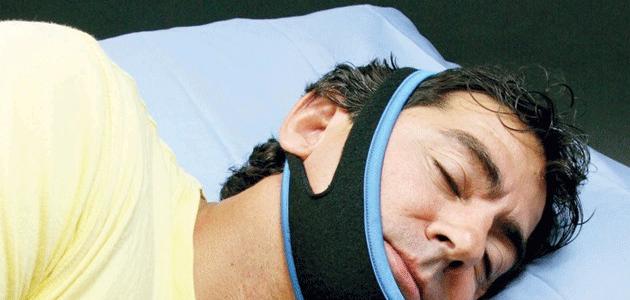Tips and advice to relieve ear pain
Some home tips and instructions can be followed to treat ear pain at home if the pain is not severe, or if the patient is waiting for the medical treatment to take effect. It is important to point out the necessity of avoiding treating ear pain at home for adults with herbs or even for children, as it may Herbs may be ineffective or unsafe. Useful home tips include:
Warm compresses
Warm compresses or electric heating pads can be used for 20 minutes on the ear to relieve pain and inflammation in it. To obtain a better result, the neck and throat can be wiped using the compress. It is worth noting that the compress should not be very hot, with an emphasis not to sleep while using it, in addition to Do not allow children to use compresses without adult supervision.
Cold compresses
Cold compresses can help relieve ear pain when applied for 20 minutes to the ear and the area underneath it, by wrapping a piece of ice in a paper towel or freezing a package and then covering it with a light cloth and using it. It is worth noting that the ice should not be painful. For the patient, in addition to not putting ice directly on children’s skin.
Read also:Treatment of otitis media
Alternate applying warm and cold compresses
Some people find that cold compresses provide greater comfort than warm compresses, while for others they feel that alternating using cold and warm compresses gives a better result in relieving pain. This is done by applying a cold compress for 20 minutes, then applying a warm compress for 20 minutes, and so on.
massage
Gentle massage of the painful area and surrounding muscles can help treat ear pain naturally, when the pain affects the jaw and teeth or causes a tension headache. For example: The jaw and neck muscles can be massaged if the pain is in the area behind the ear, and it can also help. Massage can treat pain resulting from an ear infection. Excess fluid in the ear can be drained and the pain can be prevented from getting worse by massaging with pressure behind the ear and down the neck and continuing with a downward and in front of the ear movement.
Adjusting sleeping position
The affected ear should be higher than the rest of the body by placing the head on two or more pillows. It is worth noting that it is preferable to sleep on the opposite side of the affected ear. If the affected ear is the left ear, it is recommended to sleep on the right side, and vice versa.
Read also:Ear pain in children
chewing
Chewing gum may help relieve pain and relieve pressure in the inflamed ear. It is worth noting that gum may pose a choking risk to young children, so attention must be paid.
Sleeping in an upright position instead of lying down
This may help reduce pressure in the middle ear and thus relieve pain.
Swallowing air or chewing gum when changing altitude
If your ear pain is caused by a change in altitude, such as when a plane is landing, swallowing air or chewing gum during landing may help relieve the pain.
Other tips
Among them are the following:
- Do not remove earwax, insert water into it, or place anything inside the ear, such as cotton buds.
- Keep the body hydrated and drink plenty of fluids.
- It is recommended to stand for a long time, as holding the head steady for a long period of time helps drain fluids in the middle ear.
- Quit Smoking.
- Gargling with salt water helps soothe the throat and clean the Eustachian tubes.
Ways to relieve ear pain medically
There are many methods used to relieve ear pain, and the choice of method depends on the underlying cause of this pain. Treating ear pain resulting from a cold, for example, is different from treating pain resulting from an infection, and so on. Among the methods used to relieve ear pain are the following:
Read also:sprouts
Ear cleaning
The ear is cleaned by a health care professional. This is in order to remove trapped wax in the ear. This procedure can also be used in cases of otitis externa by removing debris, the infected part, and dead skin.
pharmaceutical
There are many different medications that are used to treat ear pain, including the following:
Ear drops
Ear drops are the primary option in treating otitis externa. It works to reduce inflammation, treat infection, and relieve pain. There are many types of ear drops available that can be used together for this purpose, such as: antibiotics, acid solutions, and steroid medications. The doctor sometimes recommends using earwax softening drops in the event of an accumulation of earwax, which may reduce the pressure in the ear resulting from the accumulation of earwax and fluid.
It is necessary to note that ear drops sold without a prescription are not considered a substitute for drops prescribed by a doctor or for antibiotics. Therefore, it should be used for a few days only, and a doctor should be consulted and visited if symptoms reappear. On the other hand, parents should consult a doctor and read the medication instructions carefully before giving ear drops to children, and also not use these drops if the child suffers from a ruptured eardrum. Ears or has tubes in his ears.
Oral or intravenous antibiotics
Oral antibiotics or intravenous antibiotics are sometimes considered Required to treat more serious cases of ear pain, Like the following:
- Bacterial sinusitis.
- Cases of severe otitis externa, including:
- Necrotizing (malignant) external otitis.
- Perichondritis.
- Mastoiditis.
- Periauricular cellulitis.
pain killers
The doctor may recommend using acetaminophen, or nonsteroidal anti-inflammatory drugs (NSAIDs), such as ibuprofen, to relieve ear pain. The doctor may also prescribe a muscle relaxant or a tricyclic antidepressant. (in English: Tricyclic antidepressant) if the pain is the result of temporomandibular joint syndrome (in English: TMJ syndrome).
It is worth noting that the US Food and Drug Administration recommends that parents consult a doctor before giving any medication without a prescription to children under two years of age. These medications may cause serious side effects in infants and young children. It is not safe to give aspirin to infants and young children because it may cause a serious, life-threatening condition called Reye's syndrome. It is important to note that the appropriate dose for children is Most likely it is much less than the appropriate dose for adults.
Decongestants
Using the decongestant oxymetazoline, which is in the form of a nasal spray (in English: Oxymetazoline nasal spray), as a medicine for ear pain. If the feeling of fullness in the ear is due to sinus pain, but it should only be used for a maximum of 3 days.
You can also use salt water nasal spray, which can be used for a longer period of time and repeatedly.
surgery
The surgical option can be used to diagnose some ear pain Such as: tumor, inflammation of the papillae, or the formation of an abscess in perichondritis. It is worth mentioning the surgical procedure called myringotomy, which is sometimes resorted to to treat chronic otitis media or to treat persistent Eustachian tube weakness, as the Pressure and allowing fluids to drain from the middle ear by creating a small hole in the eardrum, after which a tube is placed in the eardrum to allow air to flow into the middle ear and prevent fluid accumulation.
Follow-up after treatment
It should be noted that there is no need to see a doctor in most casesMost ear pain goes away a day or two after starting treatment. This is not necessary unless complications arise from an ear infection They may include: recurrent pain, fever, hearing loss, nausea, dizziness. It is important not to stop the course of treatment even if the severity of symptoms decreases because the infection may recur even with the use of appropriate treatment.
People who have frequent ear infections may need to have their hearing checked, and people with a ruptured eardrum should see an ear, nose, and throat (ENT) specialist if the tear alone does not heal. In this case, surgery may be used to help repair the defect in the eardrum. It is worth noting that people who suffer from immunodeficiency or who suffer from diabetes should periodically see a doctor for follow-up and re-examination of the ear.
Reasons to see a doctor
The patient must recognize when discomfort in the ear may be evidence of something seriousIn fact, you should consult a doctor when one of the following conditions occurs:
- Feeling unwell with a high temperature.
- The patient's anxiety and confusion.
- Symptoms, including pain, do not improve or worsen within 24 to 48 hours of treatment.
- Excretion of secretions or fluids such as blood or pus from the ear.
- Feeling headache and dizziness.
- Feeling like there is something stuck in the ear.
- The presence of swelling behind the ear, especially if it is accompanied by a feeling of weakness on this side of the face or an inability to move the facial muscles there.
- Feeling severe pain in the ear and then it suddenly stops; This may be evidence of a ruptured eardrum.

